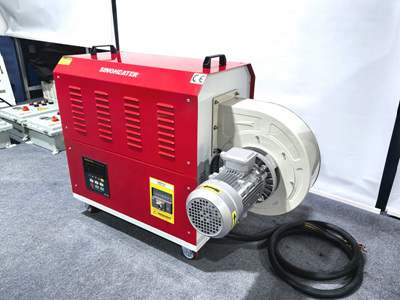After being used in a humid environment (such as bathrooms, basements, industrial workshops, etc.), the hot air blower is prone to accumulate moisture inside, which can cause short circuits in electrical components, corrosion of metal parts or a decline in insulation performance. To ensure the safety and service life of the equipment, systematic drying treatment measures need to be adopted. The following is an explanation from three aspects: drying principle, operation steps, and precautions.
First, the influence of a humid environment on hot air blowers
Electrical safety hazards
Moisture intrusion into the control circuit board or terminal blocks may cause leakage or short circuit.
Case: The relay contacts of the hot air blower in a certain factory were oxidized due to moisture, causing intermittent shutdowns.
Decline in mechanical performance
When moving parts such as bearings and gears get damp, the grease emulsifies, accelerating wear.
Deterioration of insulation performance
The insulation resistance of the motor winding decreases, increasing the risk of breakdown (the standard requires insulation resistance ≥1MΩ).
Second, the operation steps for drying treatment
1. Initial cleaning and power-off
Step:
Turn off the power and unplug the plug. Hang a warning sign that reads “Do Not Close the Switch”.
Wipe the surface moisture of the shell with a dry cloth to prevent water droplets from seeping into the interior.
Open the protective net of the air inlet/outlet and remove the visible dust or debris inside.
2. Natural ventilation and drying (slightly damp)
Applicable scenarios: Environmental humidity ≤70%, no obvious water stains on the surface of the equipment.
Operation method:
Move the hot air blower to a dry and well-ventilated area (such as a corner indoors) and place it at an Angle to facilitate drainage.
Keep the air inlet and outlet open and ventilate naturally for 24 to 48 hours.
Case: After 48 hours of ventilation, the internal humidity of the household bathroom hot air blower dropped from 85% to 55%.
3. Forced heating and drying (moderate/severe humidity)
Applicable scenarios: Environmental humidity > 70%, or there is obvious water vapor condensation inside the equipment.
Operation method:
Low-power operation
Connect the power supply and run the hot air blower at the lowest speed (such as 50% power) for 30 to 60 minutes.
It uses its own heat to disperse the internal moisture and prevent high-temperature damage to the components.
External drying equipment
Use an industrial dehumidifier or fan to continuously blow dry air (temperature ≤40℃) towards the air inlet.
In conjunction with a hygrometer for monitoring, stop when the internal humidity drops below 40%.
4. Specialized drying of key components
Motor and Bearing
Blow the motor windings and bearing clearances with compressed air (pressure ≤0.5MPa) to remove residual moisture.
Apply anti-rust oil to the surface of the bearing to prevent oxidation.
Control circuit board
Dry the circuit board from a distance (≥10cm) with a hot air gun (temperature ≤60℃) to prevent component desoldering.
Do not wipe with alcohol to prevent the residual liquid from corroding the circuit.
5. Insulation performance testing
Tool: 500V megohmmeter.
Step:
The insulation resistance between the motor winding and the casing should be ≥1MΩ (≥0.5MΩ in a humid environment).
If the resistance value is too low, the drying step needs to be repeated or disassembled for inspection.
Third, precautions for drying treatment
Safety first
During the drying process, it is strictly prohibited to cover the air outlet to prevent fire caused by excessive temperature.
Before operation, make sure the power supply has been cut off to avoid the risk of electric shock.
Avoid excessive dryness
Long-term high-temperature heating (> 80℃) may cause aging of insulating materials or deformation of plastic components.
Case: Due to continuous high-temperature drying, the plastic at the terminal of a certain hot air blower melted.
Regular maintenance suggestions
For hot air blowers used in humid environments, it is recommended to carry out a drying treatment once a month.
When not in use for a long time, seal the package and place a desiccant (such as a silica gel bag) inside.
Fourth, Summary
The drying treatment of the hot air blower after its use in a humid environment should follow the process of “power off first, then clean, then dry, and finally test”. Through scientific drying, the risk of electrical faults can be reduced by over 90%, and the service life of equipment can be extended by 2 to 3 times. If any abnormality persists after drying (such as persistently low insulation resistance), the equipment should be stopped immediately and professional personnel should be contacted for inspection and repair to avoid potential safety hazards.




